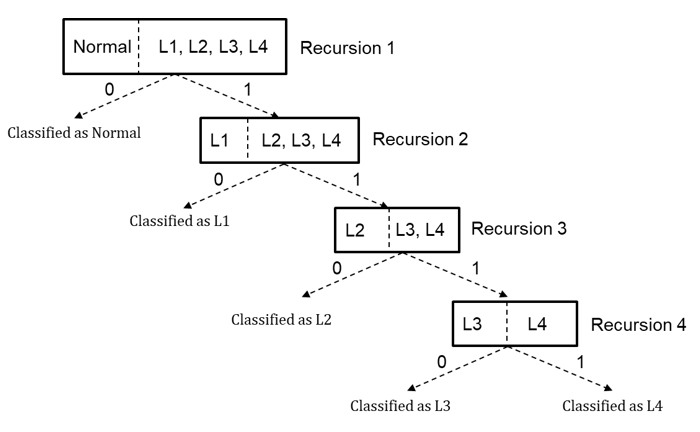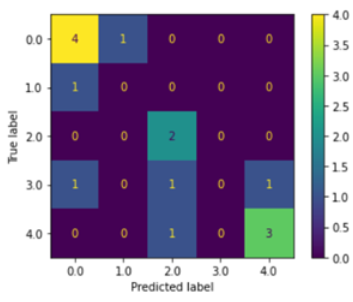Note: For the python code, reach out to me at https://www.linkedin.com/in/vishalkannan/
Built a composite machine learning model to predict the working condition of an engine based on the multivariate performance indicators
- Background
- Overview
- Input Data Study
- Feature Engineering
- Logarithmic Scaling
- Outlier Removal
- Baseline
- Multinomial Logistic Regression
- Recursive SVM Classifier
- Sample Confusion Matrix
A leading NA automaker performed a series of experiments to predict the performance of their engine under normal conditions and abnormal conditions. The abnormality is set at four different levels. The nature and levels of abnormality are protected by an NDA. The output measured is of a multivariate nature with specific number of different outputs. The outputs measured are of multi-class nature and the output data is protected by the NDA.
Range of the multivariate output data (replaced by generic output parameters)
A high level summary of the Machine Learning Model built
O1 has a significantly higher range and variance compared to the other 6 outputs. A labelling criterion is built depending on the mode as shown below:
Input data labelled
O1 is logarithmically scaled. The variance is significantly scaled down and the impact of outliers in the O1 field are reduced (both high and low).
For sample groups with more than 7 samples (eg. Normal), the Mahalanobis distance is evaluated for each sample from the sample group mean. The chi-squared distribution is used to eliminate outliers based on the p value of 0.95. The restriction on sample group size (>7) is enforced to ensure that the covariance matrix is positive definite.
The baseline is a quick multinomial logistic regression model for the multi-class classification
A simple parameter grid is setup to determine the hyperparameters by analyzing the accuracy of the classifier. A 5-fold cross validation is used to calculate the average precision, recall and F1 scores for each class.
Support Vector Machines are used for binary classification. The hyperparameters of the SVM classifier are fine tuned by converting the data into a normal vs abnormal binary classifier (labels > 1 are set to 1). A recursive Support Vector Machine algorithm is used to successively classify the testing samples into the appropriate label as shown below:
Recursive SVM Classifier
Confusion Matrix Example
The conditional probability is evaluated by performing 5-fold cross fold validation The precision, recall and F1 scores improve significantly for each class




